Age of Sigmar 4th Edition Core Rules Review and Deep Dive – Skaventide Core Book
The Vermindoom has begun, with the fell metropolis of Blight City tearing itself into the Mortal Realms through the machinations of The Horned Rat and Archaon the Everchosen, as the Skaventide launch box heralds in the 4th edition of Warhammer Age of Sigmar.
In this review and deep dive we’ll be opening up the mighty tome that is the Warhammer Age of Sigmar Core Book and giving our thoughts on the brand new core rules for the new edition of the game. We’ll talk about everything that has changed in the game, how it feels to play and what we think of it after having played through a number of games.
Massive thanks to Games Workshop for sending us a free copy of Skaventide to check out on the site. If you would like to support the site then why not order your copy of Skaventide through our affiliate Element Games and save yourself money too?
We’ve also written a full review of the Skaventide Box, checking out all of the contents, painting it up and seeing just what value it is and if it’s worth picking up which you can read here
We also have a number of new videos up today which you can watch over on YouTube or just down below as we look through the Core Rule Book, Unbox the Skaventide set and play our very first matched play battle report
If you are interested in Spearhead, then make sure you stay tuned to the site as our full review of Spearhead and our look at the Jade & Fire book will be live on Monday 24th at 10am!
So without further ado let’s jump straight into our review of the Core Rules of Warhammer Age of Sigmar 4th Edition and the Core Book from Skaventide!
Age of Sigmar 4th Edition Core Rules Review & Deep Dive
Can you believe it’s been 9 years since Age of Sigmar came out? I remember collecting all of the End Times books at the end of Warhammer Fantasy and excitedly counting down the days until Age of Sigmar was released! And I think it’s safe to say that AOS had somewhat of a false start, the team had aimed at building something accessible and easy to get into with a concise set of easy to follow rules, with forming armies and playing through battles being put down to player agency to balance themselves. Of course in hind sight, without a framework of rules on how to construct and assemble a “legal” army, many people were put off because of a lack of way of playing balanced matched play games.
Games Workshop addresses this with the General’s Handbook, which gave us matched play rules, points values and army construction rules so that players could have exciting and balanced games needing tactics and strategy.
3 years later in 2018, Soul Wars was released – this new boxed set introduced brand new Nighthaunt and Stormcast models alongside a reforged 2nd edition ruleset that tweaked and amended things that had been learned over the last few years of Age of Sigmar making something closer to what we know and love now.
2021 saw the release of Dominion, heralding in the 3rd edition of the game and introducing concepts such as Battle Tactics and Grand Strategies, while refining and tweaking things to make the most complete edition of the game so far.
3rd Edition Age of Sigmar is probably one of my most played Games Workshop systems, with me embracing both Matched Play and Path to Glory and building up armies for most factions in the game. When news of 4th Edition was on the horizon I was a little nervous. 40k 10th Edition did a couple of things I didn’t enjoy like reducing psychic powers down to simple buffs and passive abilities, and some factions feeling a little diluted until their codexes got released. I was very worried that similar changes would happen to the game I loved the most.
Thankfully, I can report today that there was nothing to be scared about. Warhammer Age of Sigmar is AOS at it’s best, taking parts from previous editions and reforging it into something as sleek and powerful as the Stormstrike armour of the new Liberators while still keeping everything that makes Age of Sigmar great fun to play. Games are quicker, more intuitive and easier than ever to teach, while still having the tactical depth and fun that we love.
Found for the first time within the Skaventide box, the Core Book contains Lore, Core Rules, Advanced Rules and Battlepacks for Matched Play and Path to Glory. In this Deep Dive and Review we’ll be taking a detailed look at whats contained within it’s pages and how the game plays
The Lore
As with most core books, the first 190 pages are dedicated to lore about the game, universe and factions of the Mortal Realms. As ever these pages are filled with gorgeous art work both old and new – one thing I really like here are the new pieces of art that are drawn in an old looking cross hatched style, which perfectly captures the feeling of these perhaps being illustrations that have been penned by in-universe historians. This is something we saw in the Thondia book, and I’m very happy to see it again here as it makes you feel as if the lore section is an in-universe repository of knowledge that you are thumbing through.
We also get a full history from the Age of Myth up though to the recent events in the Dawnbringers series. If you are a new or lapsed Age of Sigmar fan, then the more here will get you up to speed with current events. If you’ve not played before then the lore in Age of Sigmar is much more fluid that in Warhammer 40k. We tend to see some fairly significant effects play through each edition that have larger knock on repercussions in the lore. This is one of the things that I love so much about Age of Sigmar as the universe is constantly changing and evolving, allegiances will change and break, and you never quite know what is around the next corner. By collecting all 9 years of major events into the Lore section then its a lot easier for people to jump in and know what is happening.
All of the realms and races are also detailed here with particular attention given to the realms. Again we see in-universe letters, reports and bestiaries giving us insight into what the realms are like and which creatures and wildlife live there. One of the early problems we had in Age of Sigmar was that it was a fresh universe with lots still to be explored, where now in 4th edition it feels like a lived-in world with its own history and background. There’s a lot of cross pollination with the Cubicle 7 Soulbound RPG too, which has helped grow the world and it’s history.
For players new to the worlds of Warhammer, there’s a lot of info to drink up here, but it was also enjoyable for someone who is well versed in the Age of Sigmar. If you are new then there’s lots here to help you choose which faction to go for with background on every faction along with miniatures artwork to entice you into starting one of the many armies available!
Core Rules
For this edition of Age of Sigmar, the team has broken down the rules into a modular nature that can then be slotted together like building blocks depending on the Battlepack being used – so for example while Matched Play and Spearhead use some similar concepts, the actual rules modules that they use is different. This is great as it means everyone can learn the core rules, and then the advanced rules that are relevant to their way of playing. This also makes it really easy to teach the game to new players in bite sized chunks.
First up we have the core rules themselves, and these cover how units move, shoot, charge and fight along with any other basic rules mechanics.
One of the big changes in 4th edition is that most things that units can do within a game have been broken down into “abilities” with every unit only being able to do a single core ability within a phase. So for example if we take a look at movement, a unit could do either a Normal Move, a Run or a Retreat action. This stacks further with other rules and abilities restricting or amending other core rules – so for example if a unit comes on from reserve then they are not allowed to make an action in the movement phase at all. By baking these kinds of rules into the core mechanics it closes a lot of loopholes and means that the rules team don’t need to create overly wordy special rules as they will already work with these core mechanics in mind.
Another great thing that we see in the rules is some really clear colour coding and structure around when abilities are used, how they activate, what they target and how they interact. There’s a clear ordering too with the active player doing all their abilities first followed by their opponent.
In previous editions of Age of Sigmar I often had to make a “cheat sheet” in order to remember what abilities happened and when, but with the new warscrolls and the colour coding of everything from basic abilities to command abilities and unit special rules it’s now easier than ever to scan a warscroll and eyeball what is used in each phase, even if it’s your first time using that army. This stops one of the big stumbling blocks that some new players had when trying to get into the game and I really hope that it is something that we see in future editions of other Games Workshop games, as in our practice games we’ve had very little looking up of rules as the majority of stuff is crystal clear and right in front of you on the warscroll. For people who may be colour blind, GW have actually also included some small icons in addition to the colour banding to make each phase distinct.
Priority still follows a lot of the same rules that we have previously had in the game, for example the choice of first turn goes to the player who finished deploying their army first, with each subsequent turn decided by a roll off. As we will see later in the advanced rules, there’s now some tense moments with this as if you opt for a “double turn” you are not allowed to pick a battle tactic in a Matched Play game – meaning you are going to have to weigh up between scoring maximum points, or having the potential for a lower score at the reward of being able to do lots of damage to the enemy. This is a great change that really adds some important decisions in a close game.
A new concept that has been introduced is the “underdog” – This is a “catch up” mechanic that exists in all game modes and gives an advantage to the player who is currently lagging behind in victory points. The underdog bonus is determined by the scenario, and some cunning players may opt to be the underdog going into a critical turn in order to be able to turn the tide at a key moment. Combined with the decision to make about priority I think this is going to lead to some very exciting games for both pro and casual players alike.
One of the things I don’t like visually about games is when units are spread out or daisy chained in order to minimise hits or maximise coverage – this never really felt right from an in universe standpoint that a unit would slowly move across the battlefield meters away from each other rather than being ranked together in a fighting unit, or that cavalry units would simply become mobile fences of horses to stop units getting to your heroes. In 4th Edition unit coherency has been massively reduced to half an inch, each model in your unit has to be within 1/2 an inch of another model, or 2 models if there are 7 or more models in the unit. This reduces the impact of some of the things mentioned above, but also makes units feel more like units on the battlefield – even though we’re not blocks of square bases, they now operate more like that.
While moving and running works much the same way, we do see some big changes to Retreat that makes it quite a risky endeavor. Units now take D3 Mortal Damage when they fall out of combat, which is a big thing to consider when thinking about the impact of tying up units.
This also ties quite nicely into the new shooting rules. Previously units were free to shoot if they were in combat, now they are only able to if they have the relevant weapon rule. This means that pinning down units with chargers is now every important, and has the added bonus of making the opponent weigh up if its worth it to take the mortal damage from running away.
Another big change is Combat Range – this is a 3″ bubble around units that represents both it’s control of objectives and the “reach” of them in close combat, as well as also being the range of a lot of supporting buffs from characters. Weapon ranges for melee are completely gone, and instead every model within 3″ can now fight making combat a lot more brutal due to the numbers of models that can fight, especially in hordes. This somewhat counters the removal of battleshock, so expect some fights to be more prolonged over multiple turns compared to last edition, rather than a unit taking a load of damage then evaporating from Battleshock – again, this is a good change in my books!
Pile in has also been simplified with some subtle changes – models now have to be no further away from the target unit, which doesnt have to be the cloest unit, and then your models can move no further away from the target unit (not model) – so you can lap models round, get them in better positions and even move away from another nearby unit if you have not selected that one to be your target. With clever pile in moves we might see quite a lot of interesting stuff happen here such as picking a unit to be a target as with the pile in you can get more models on an objective.
Speaking of Objectives, control of these now relies on the control stat of the unit which can vary from unit to unit rather than being fixed values as previously – this allows some abilities to increase or deduct from that control value, which again adds to some interesting play and gives some units roles as dedicated objective takers.
We talked about this previously in our first game following the Age of Sigmar preview event, but damage is now assigned to units rather than models – when a unit takes damage equal to the health of the unit then a model is removed. This is a great change and stops some of the instances when you would end up losing coherency due to you simply putting a wound on the “wrong” model – we always tended to play around this as it felt a little off losing half a unit due to sloppy allocation, so I’m very glad this is now gone!
Weapon abilities bring a lot of flavour to units and weapons now with certain tools being used for specific tasks:
Anti X (+1 Rend) – This gives additional Rend against a specific keyword such as HERO or against a specific action like CHARGE
Charge (+1 Damage) – Increases weapon damage on the charge
Companion – This is a keyword that identifies things like mounts and critters that have attack profiles, but that GW do not want to be affected by buffs
Crit (2 Hits) – a hit of 6 generates 2 hits
Crit (Auto Wound) – a hit of 6 wounds automatically
Crit (Mortal) – a hit of 6 causes Mortal Damage and the attack sequence ends
Shoot in Combat – The ranged weapon can be shot while in combat (Units cannot do this unless the weapon has this rule)
I really like these as they are a lot easier to remember what they do as they are much more descriptive that the 40k equivalents and pretty much do what they say on the tin. With all these abilities triggering on a hit rather than some on hits and some on wounds, its a lot quicker resolving combats rather than checking back and forth if you are looking for a 6 on the hit or wound roll!
Heroes get a lot more resistance in the new edition of the game with the Guarded Hero rule – this works much like it used to but with some tweaks. Now, if a non monster, non warmachine hero is near any unit that is not a hero then they are -1 to hit when shooting, and if the hero is infantry then you cannot shoot them at all unless you are within 12″ of them – this massively helps some fragile units from getting taken out by shooting turn one, but beware there are still snipers who exist who ignore this rule!
Advanced Rules
As mentioned earlier, the rules for 4th Edition are modular, and a lot of this modularity comes from the Advanced Rules – here we see rules for Commands, Terrain, Magic (Including Priests and Manifestations), Army Composition, Command Models and Battle Tactics. The idea here is that outside of the “offiicial” battlepacks, you could opt to include as many or as few of these modules in your casual games. While a lot of people play matched play, this is by far in the minority and most people play casual games at home – so feel free to experiment with whatever works for your gaming group. There’s no “wrong” way to play Age of Sigmar, just play with what you’re comfortable with and have fun rolling dice!
With Heroic Actions and Monstrous Rampages (though these do sort of exist on certain warscrolls) a thing of the past, the main resource and reactive ability you have available to your are Commands. This pool of Commands has increased somewhat since 3rd edition and there’s some really fun stuff here.
Each player gets 4 command points a battle round, with the Underdog getting an additional one, making them a very limited resource
Rally now has you rolling 6 dice, with each 4+ restoring a wound, or if you roll enough 4+s equal to the wounds characteristic you can bring a slain model back
Magical Intervention has you able to cast a spell or a prayer in your opponents turn (at -1 to cast)
Redeploy still moves a unit D6 inches, but now any unit can use it to move (Though keep in mind that the active players gets all their actions first, so you will be redeploying at the end of their movement phase)
At The Double still has you run 6″ rather than roll
Covering Fire allows a unit to shoot at the closest enemy unit (at -1 to hit) – this is a big change as this is done at the end of the shooting phase
Counter Charge allows you to charge in the enemy charge phase for 2CP – this is expensive but very powerful.
Forward to Victory is the same and allows you to reroll a charge
All-Out attack remains the same and allows you to add 1 to hit rolls in the combat or shooting phase
All Out Defense likewise also remains the same adding 1 to save rolls
Finally Power Through is a new Command that allows a stronger unit to break out of combat with a weaker one, making a full normal move and dealing D3 Mortal Damage – this is great to get characters, monsters and chariots out of combat and ready to counter charge next turn.
One big thing that has been refined in 4th edition are terrain rules, gone are random charts for effects, and instead there are now 5 core terrain rules that are applied to different pieces.
Cover grants you -1 to hit if an enemy is targeting you through the feature
Impassible does what it says on the tin
Obscuring means you cant target models through it or wholly in it (Which is going to make Sylvaneth very tricky with the Wyldwoods they can summon)
Places of Power allow a hero to gamble with a dice roll with a chance of taking mortal damage or instead getting a bonus to cast or a chance to unbind if they are not a wizard or priest
And Unstable can be moved across, but you cannot end a move on one.
Whats really nice is that the book has a full list of every single Age of Sigmar terrain kit, and which of these rules applies to them, along with guidelines on how to apply these to scratch built terrain.
Magic and Prayers have seen a big change in the new edition of the game, mostly in the fact that you gain access to an entire spell and prayer lore, along with a manifestation lore of your choice (more on these later)
This gives you a lot more freedom in choosing what to cast as you no longer have to assign an individual spell to each caster, giving you loads more utility. There are even spells with the Unlimited keyword that allows them to be cast by multiple wizards in a single turn. With these changes we see Mystic Shield and Arcane Bolt removed as generic spells however. At the moment each faction gets access to a spell lore, but I suspect we will get access to multiples and have to pick between them one Battletomes are released. With this model they can even release generic lores that players can opt to pick instead of their faction specific one.
Priests are much more fun to use now too – essentially your priest generates prayer points by making a roll each turn, which can either be spent to cast a lesser version, or powered up further to do a more powerful version – there is of course a gambling element here as if you roll an unmodified 1 then you lose prayer points and potentially be back to square one!
Manifestations are the new name for Endless Spells, and these have been changed quite a bit too – no longer do these move in the hero phase, and instead they operate like the rest of the army, moving, shooting, charging and attacking. They now have wounds and save values which means that they can be taken out by anything in combat, and they also still have the potential of being banished by Wizards and priests. While initially this may make them seem a little weaker than they used to be, the big advantage here is that they do not cost any points – this means that each player will want access to either their faction ones, a set of 3 generic ones (All the old generic Endless Spells have been grouped into sets of three that can be taken as part of your army, and I suspect they will be reboxed and sold in this way) or you can take the Krondespine Incarnate. Some people will complain that this “forces” you to buy some manifestation kits, but I actually feel that this gives people the chance to actually use these when they may have instead sat on the shelf because of points limitations.
Army Composition
One of the biggest changes in 4th edition is the way you build an army. Previously there were restrictions based on various unit options such as only being allowed to take a certain number of heroes, behemoths and a minimum number of battleline units, with certain army subfactions changing up which units counted as what.
In 4th Edition we see a move to a regiment system, which can seem a little confusing at first, but will be a lot clearer once you see the full army lists and points values, once they are released on Warhammer Community. Essentially you can take 1-5 regiments with each regiment consisting of a single hero and 3 non hero models. Your general’s detachment is allowed to be joined by 4 units. Where this gets clever is that each hero has a listing in their points listing of what units they are allowed to take – so for example a Shooty hero might be able to take shooty units, which a Combat hero might be able to take a specific type of combat unit. Particularly powerful warlords and faction leaders may be able to take any units including certain heroes too!
Each of these regiments is a single “drop” at deployment, and as with the previous edition whoever finishes deploying first.
What’s cool though is you can also opt to take additional units outside these regiments too as auxiliaries. Each of these individual units are an additional “drop”, and the player with the least auxiliaries getting an addition command point every turn. While I imagine in most matched play games players will try and limit drops in order to get the first turn, this still gives you the ability to create some wacky army lists – so for example if you wanted a Warlord Engineer and as many Doomwheels as you can fit into 2000 points, then you can go for it, but you’ll be finishing deploying last, and giving you opponent an extra command point each turn.
Units can still be reinforced to double their size, but they can not be reinforced twice any more. Allies are also a thing of the past now, with each grand alliance instead getting access to Regiments of Renown. These are pre built regiments that can be taken by specific grand alliances – we’ll be looking at these in another post closer to release.
There’s some really great scope for building armies now, and rather than spamming units, there’s going to some real play in building an army that leans of a lot of strengths through using different and varied units, which in turn leads to a more fun collection of models as part of your collection.
Path to Glory
While Matched Play and Spearhead are covered in separate books (With the Spearhead book and the General’s Handbook in handy card form being included in the Skaventide box) the other main way of playing is detailed in the Core Book itself.
Path to Glory has been a firm favourite of the Sprues and Brews team since it was introduced last edition, and in 4th Edition it’s had quite a refresh. The focus is now on your units leveling up and gaining cool new abilities rather than the fortress territories mechanic that the previous edition had. With the spotlight now put on the units, it feels much more like your units are gaining experience and advancing in their combat skills rather than the main drive being building your settlement and expanding our your territories to gain access to new features.
Rather than charts that you simply roll on in order to access your upgrades, each unit in your army has to choose a “path” to follow which gives them access to a progression tree more like what you would see in a video game. Each step on the path gives your unit access to one of two new abilities, which means you can tailor your unit progressions with certain roles in mind. Have an aggressive combat focused general? Then set them on the Path of the Warrior to give him options like extra attacks, extra rend and strike first. Rather have someone who has a more supportive role? Then make them take the Path of the Leader and they will instead give nearby units higher control values and make them easier to Rally.
The book contains 6 battle plans to get you going, and it’s easy enough to use matched play missions and still make them work for Path to Glory with some tweaking. The book also promisses Path to Glory content in each battletome as it is released, with early teasers on Warhammer Community pointing to new Anvil of Apotheosis content on the way in Battletomes that allow you to create your very own heroes from scratch in order to forge your own narrative.
I’m very much looking forward to seeing how Path to Glory plays out this edition, and I can’t wait to craft an ongoing story with my gaming group.
Summary
So what do I think of the new edition of Warhammer Age of Sigmar? I mentioned earlier in the article that 3rd edition was one of my favourite systems from Games Workshop, and I really think that the team have refined that further into something very special with 4th Edition. All of the changes we have seen do great things to improving both the excitement and fun of the game while also introducing important choices that the players have to make. The great thing with this is that impacts both competitive players with potentially game changing decisions to make at key moments, while also keeping things fun and engaging for casual players. While I think 10th edition 40k was perhaps driven in trying to create a tournament game system, it perhaps did this at the expense of fun and flavour in the armies. For Age of Sigmar the opposite is true with 4th Edition – We have something here that not only makes the game mechanically the best it has been so far, but still does it with the feel of Age of Sigmar running through it’s veins and all the magic that we have come to love from it.
All of the games I’ve played so far have been fun, exciting and close too, with the underdog mechanic offering the potential of a comeback without being game breaking. it really feels that the writers understand what it is that makes Age of Sigmar special, and have done everything they can to tighten up and refresh some areas while still ensuring that it works as much for casual players as it does for tournament players.
Age of Sigmar 4th edition is AOS at it’s very best, And I can see this being my main game system for the foreseeable future.
And that’s before we even jump into the awesome new Spearhead mode – but more on that on Monday…
Don’t forget, if you want to see a demo game you can check out our battle report over on YouTube or down below
Skaventide is up for pre order on Saturday 29 June and is released Saturday 13th July
Games Workshop provided Sprues & Brews with a free copy for review purposes.

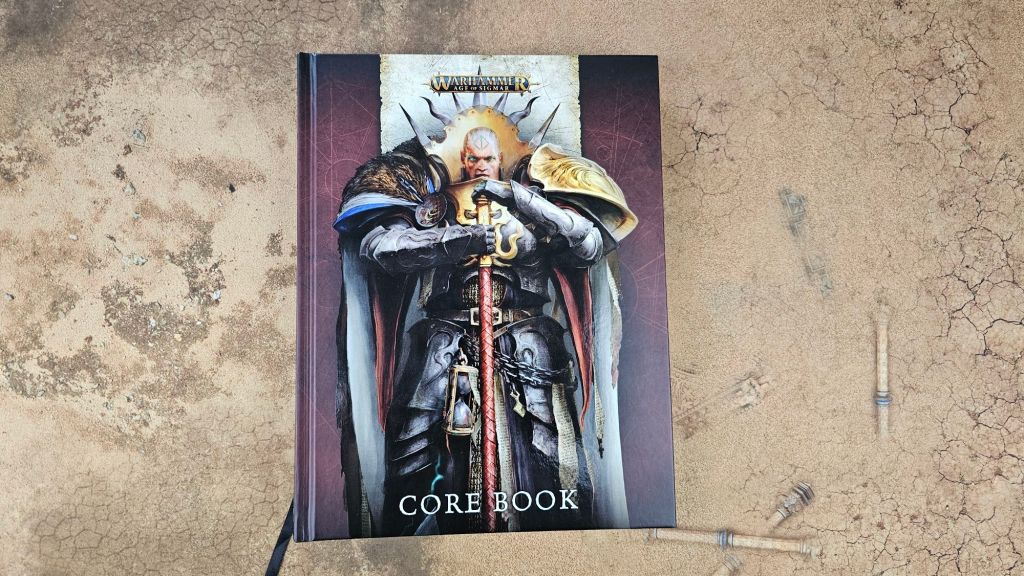
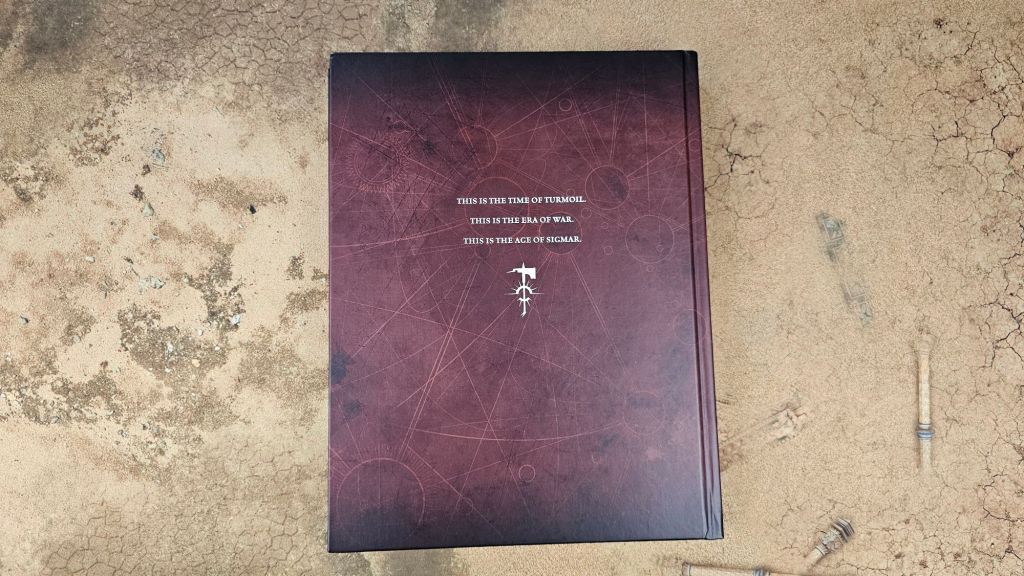
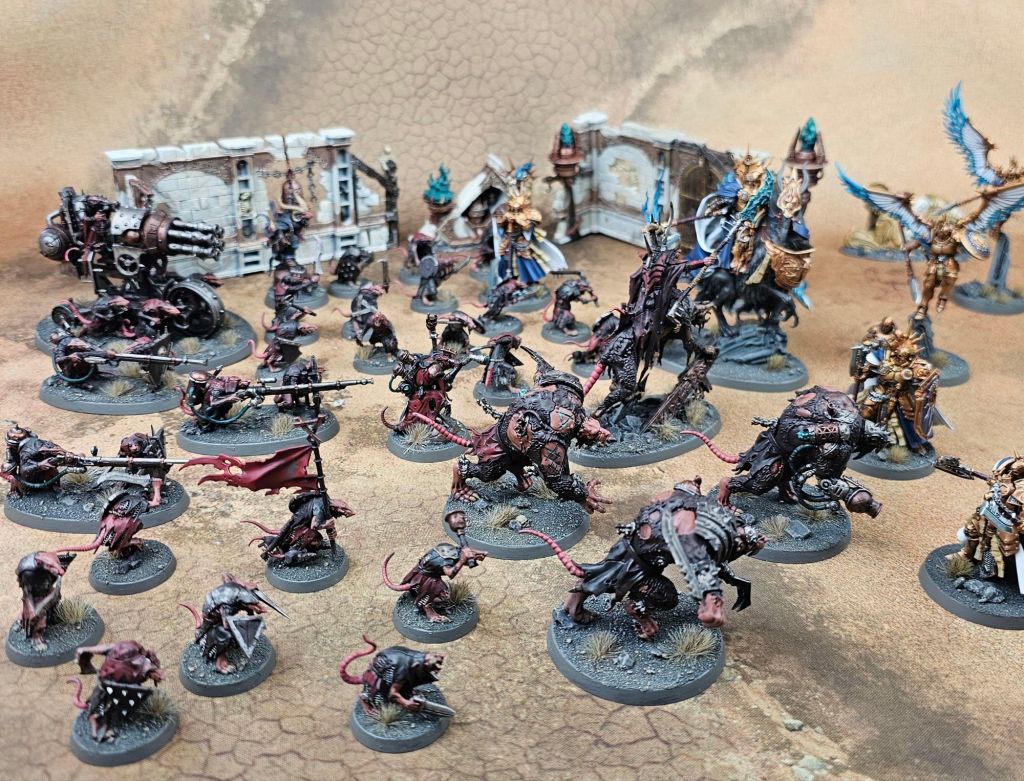
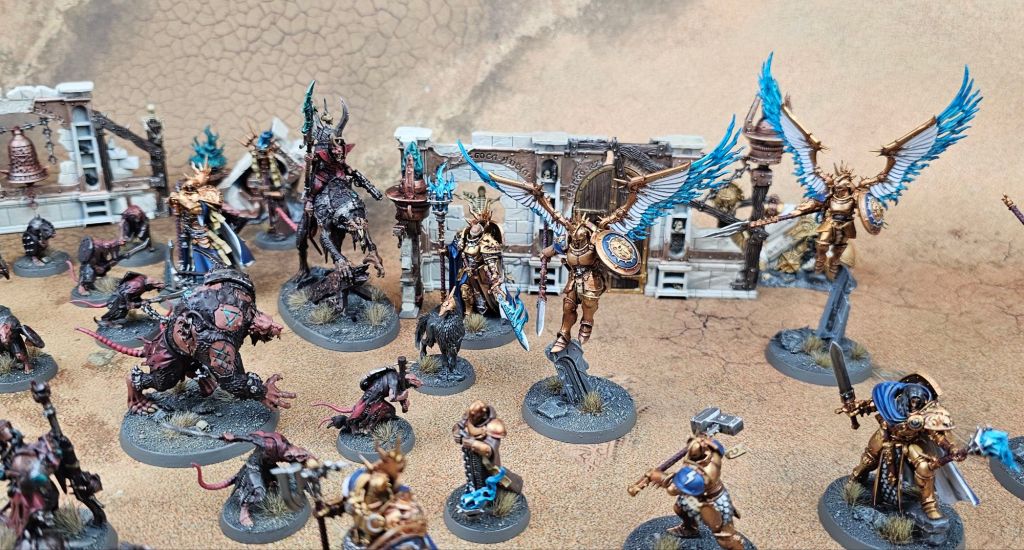
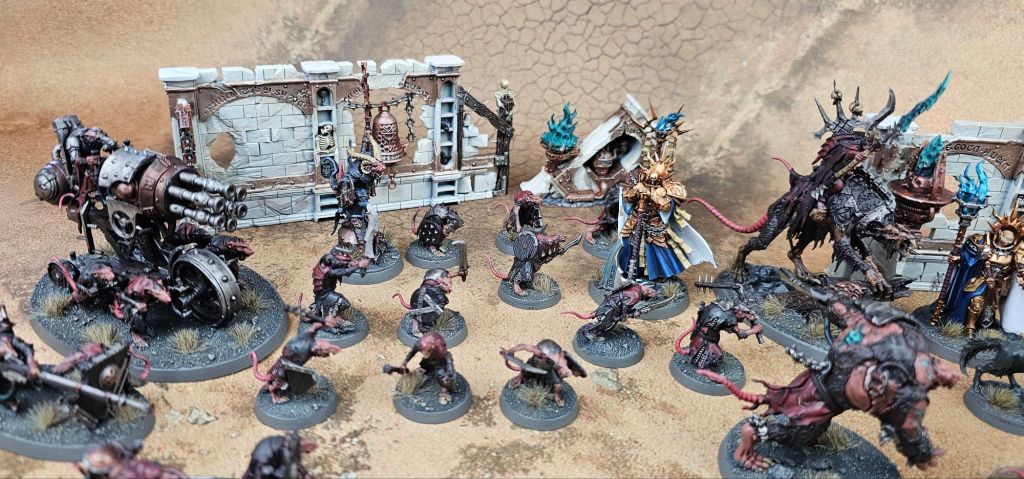
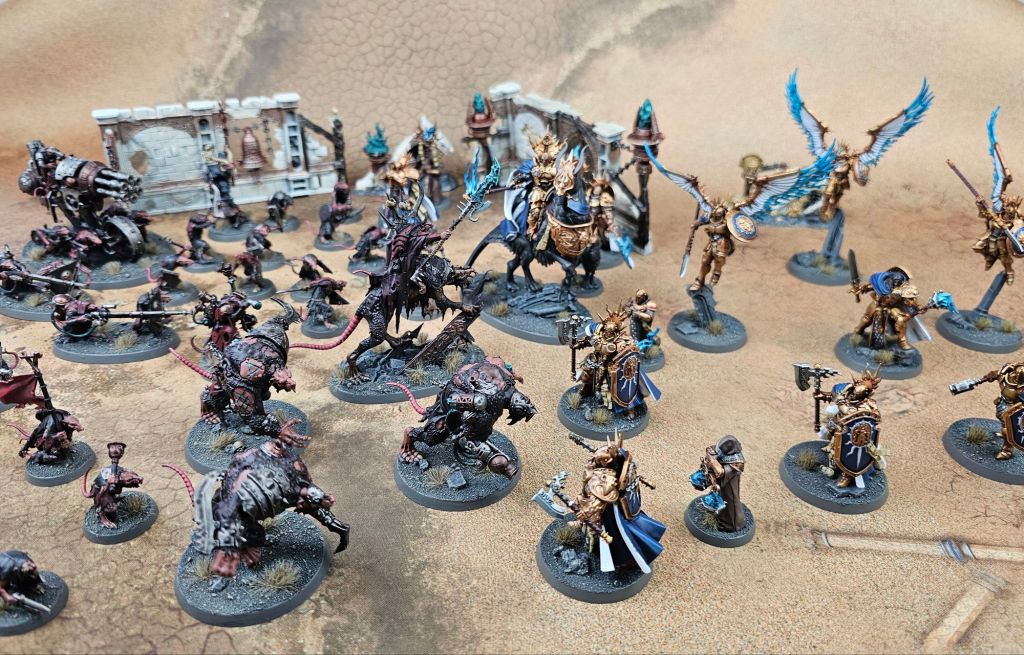
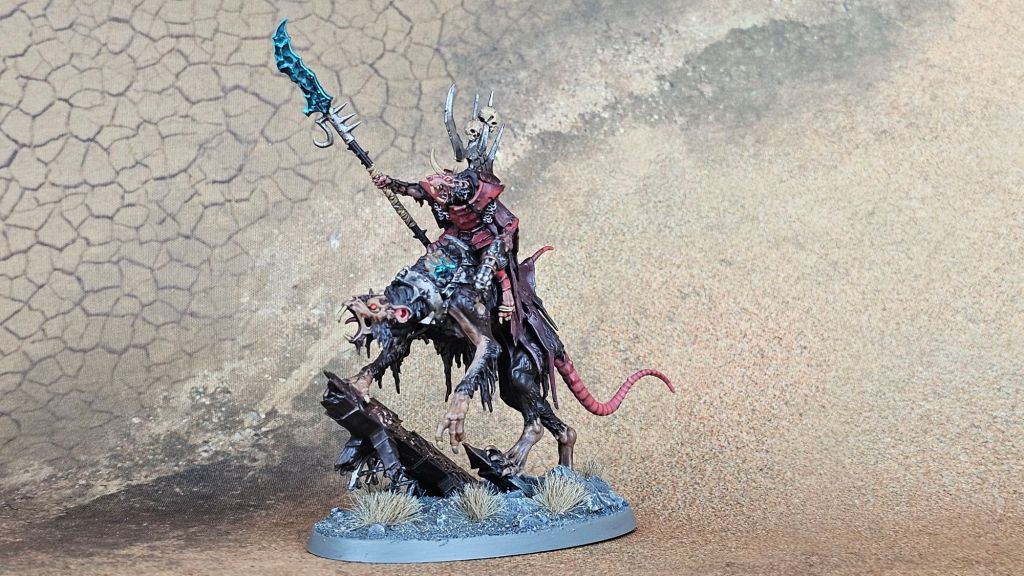
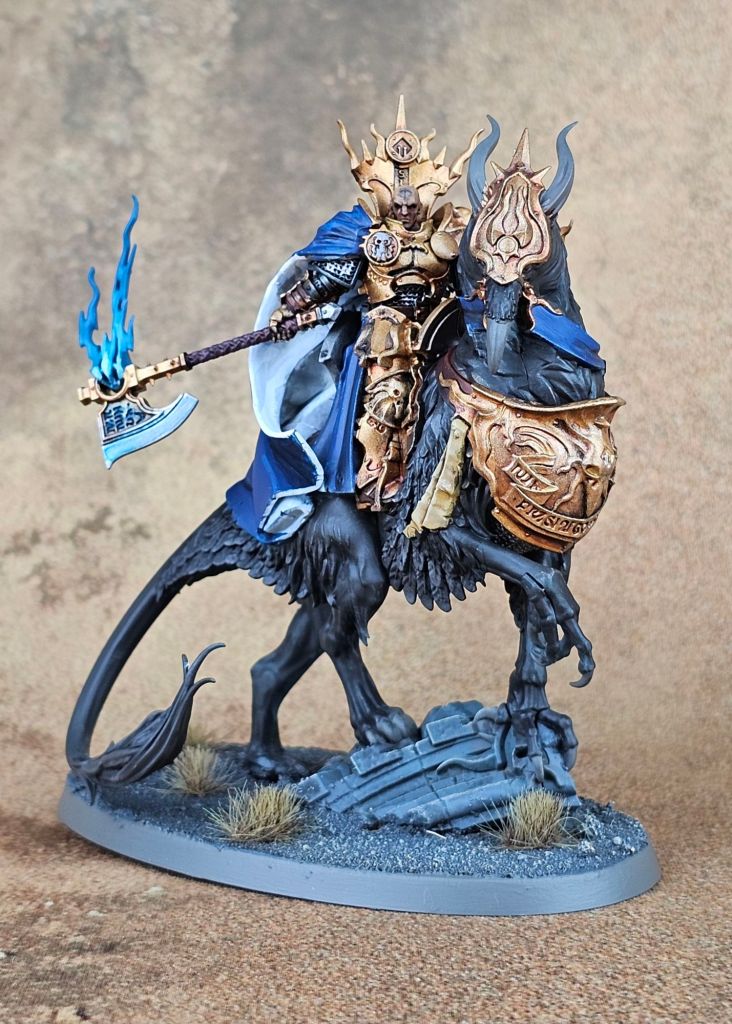
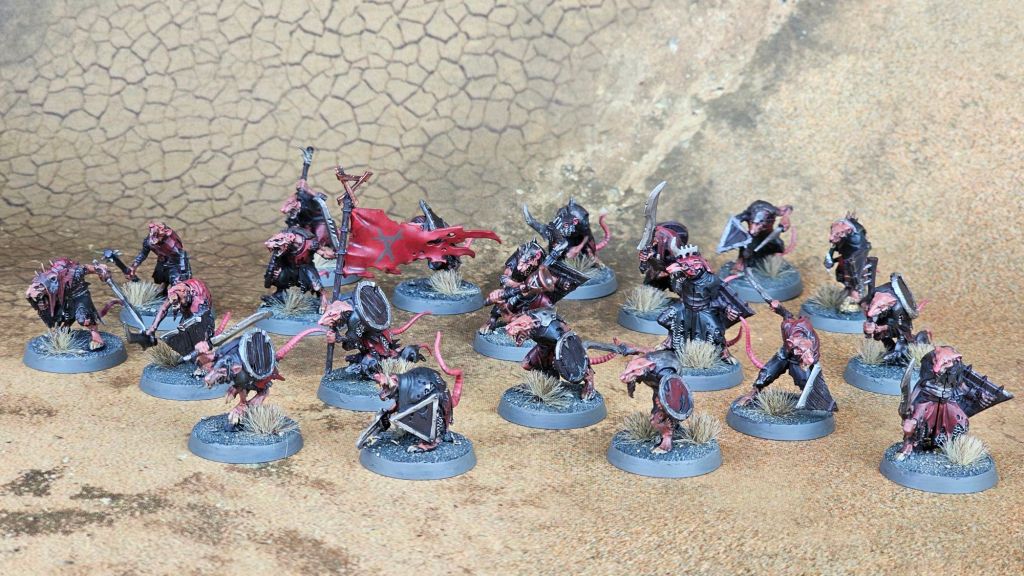
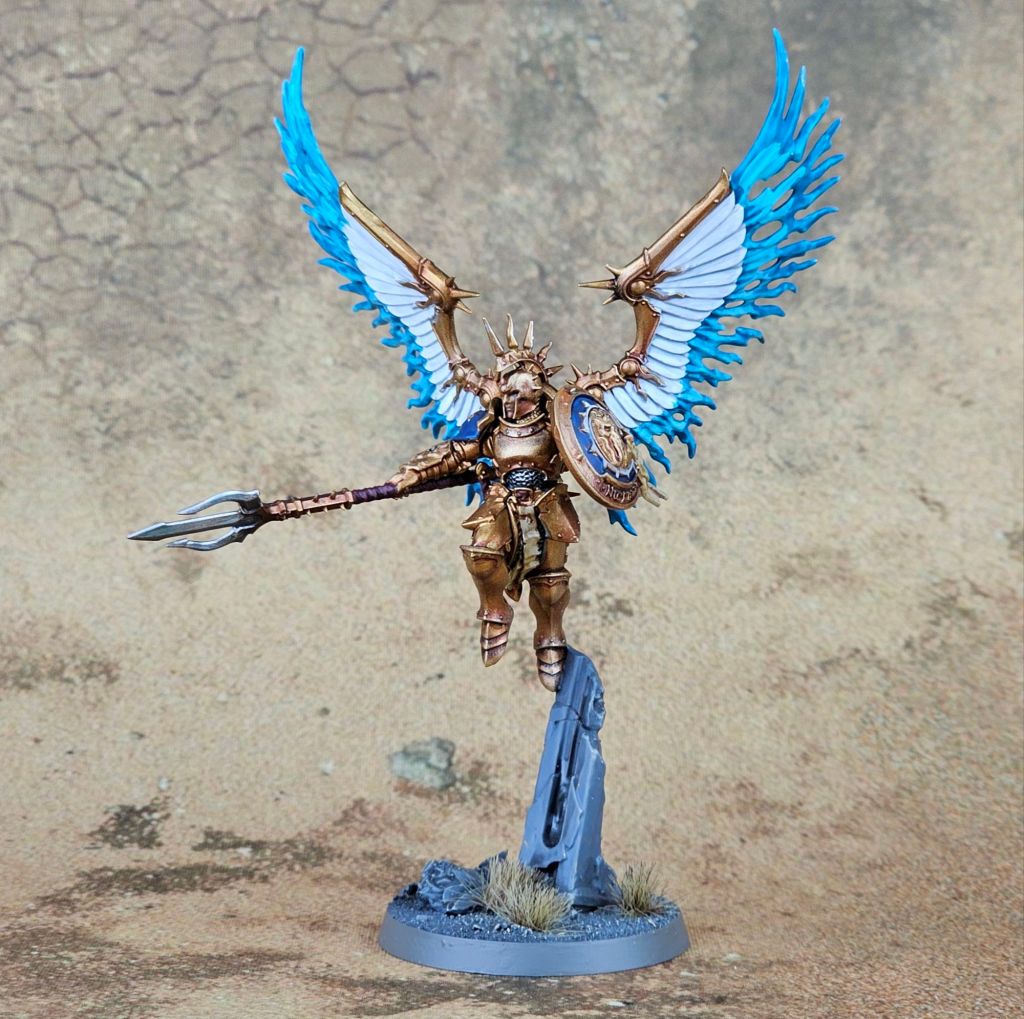
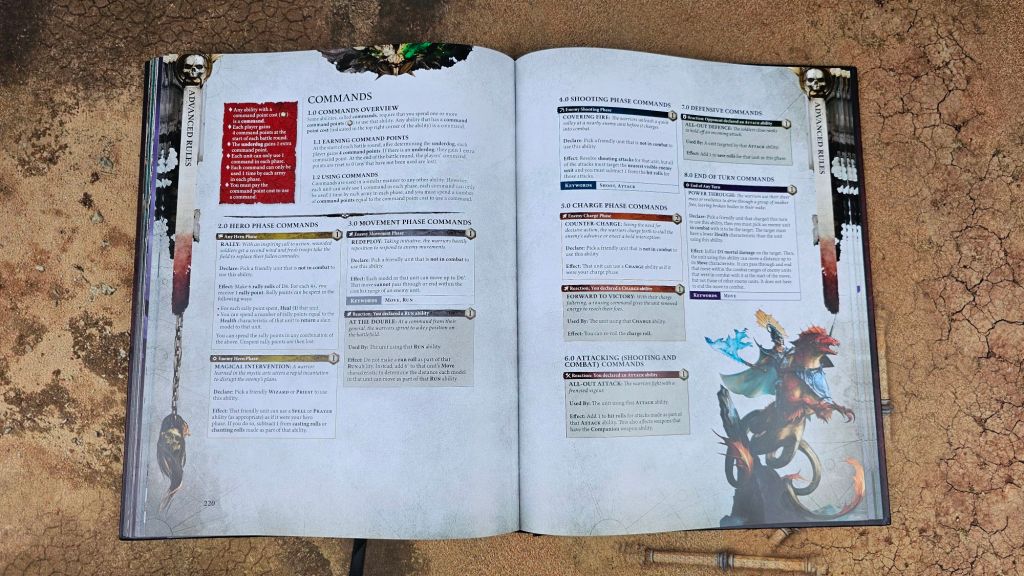
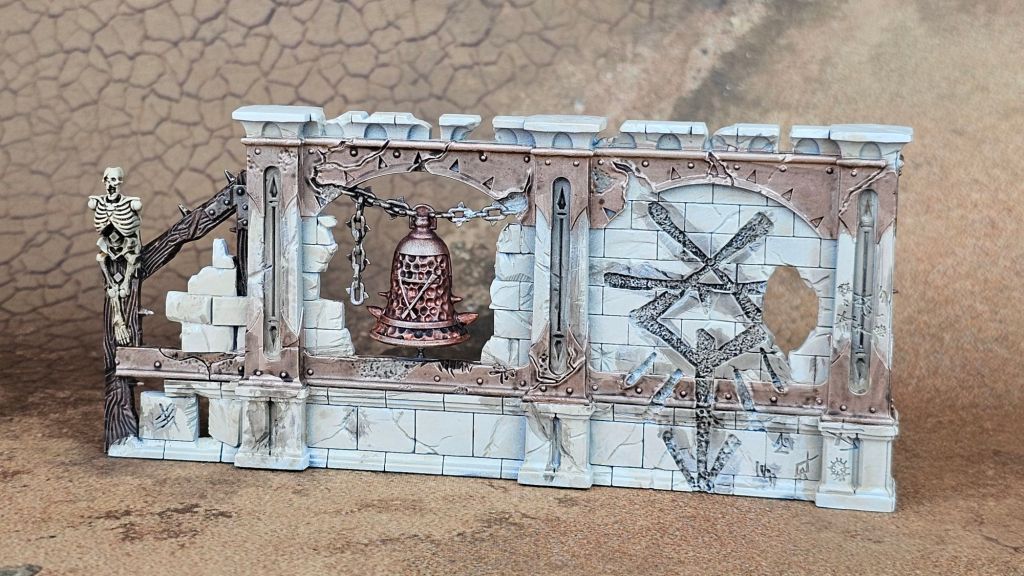
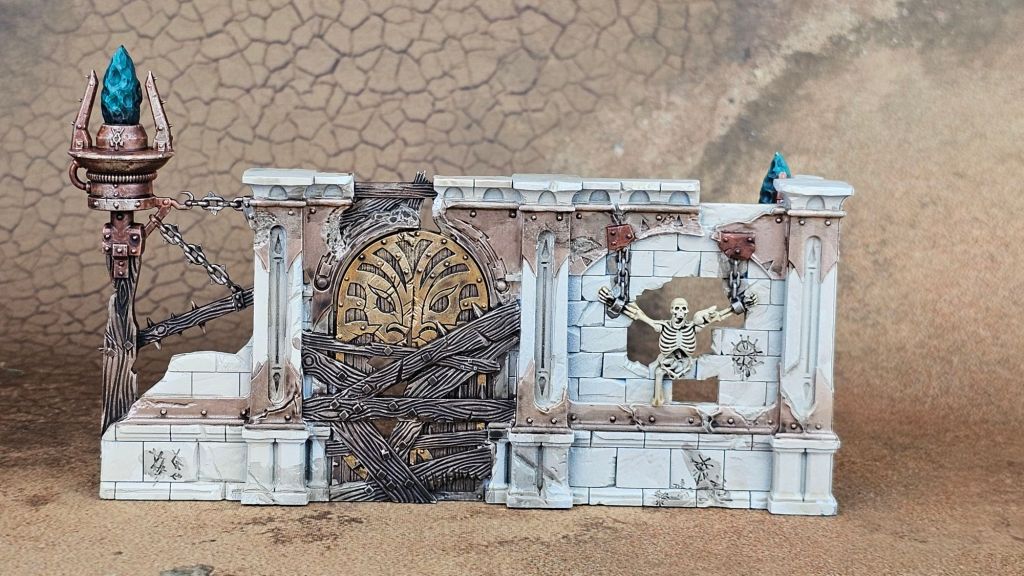
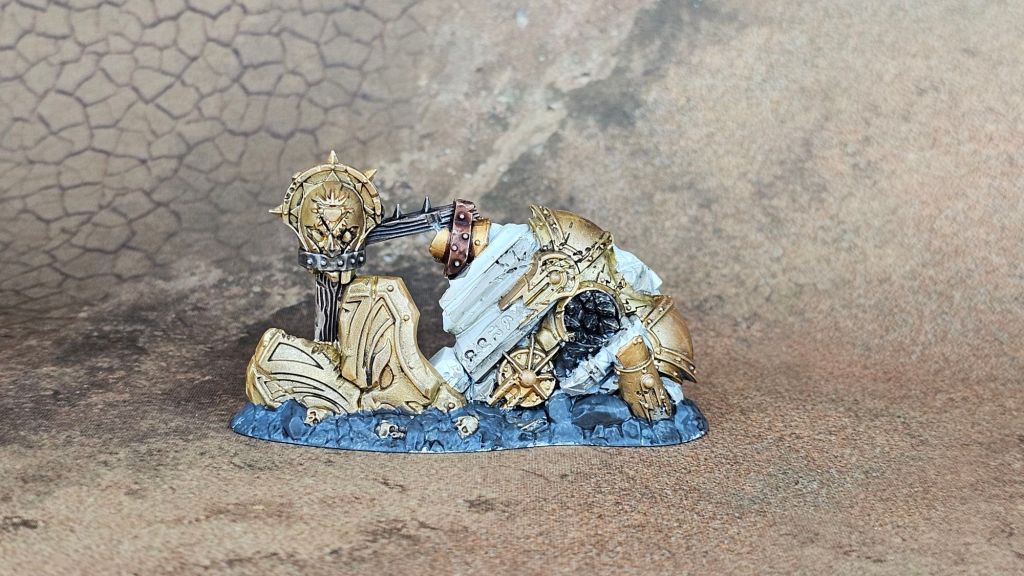
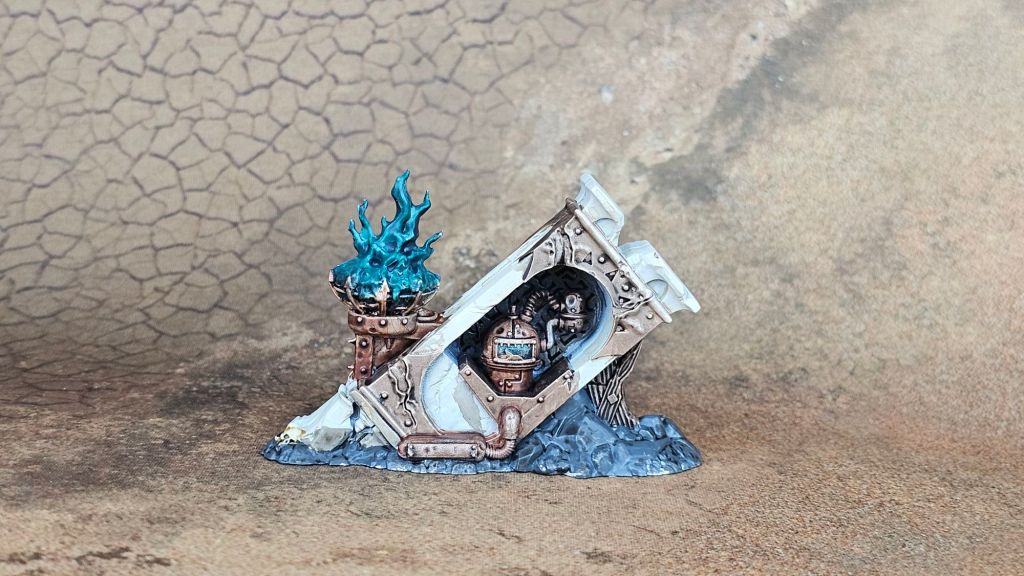
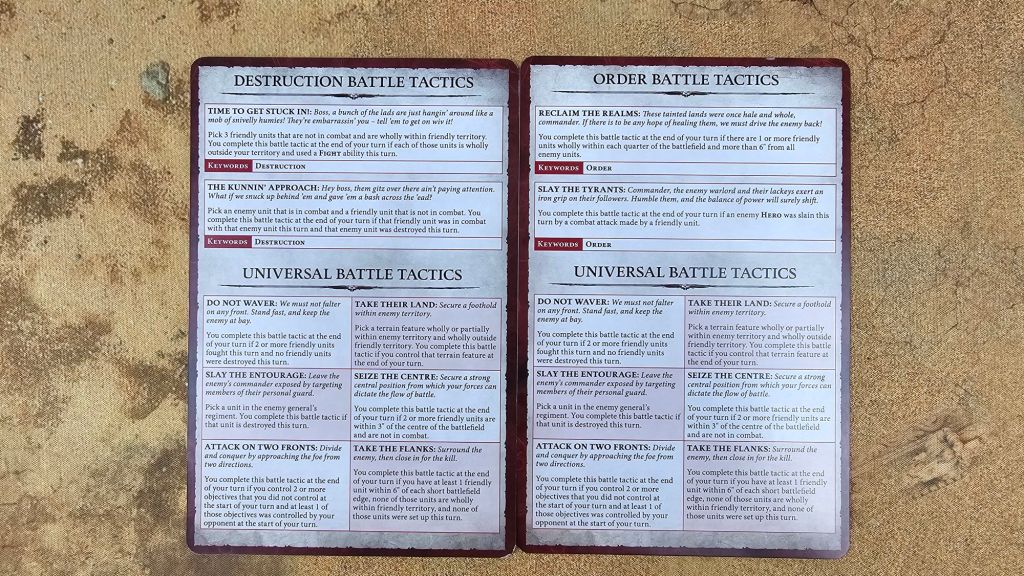
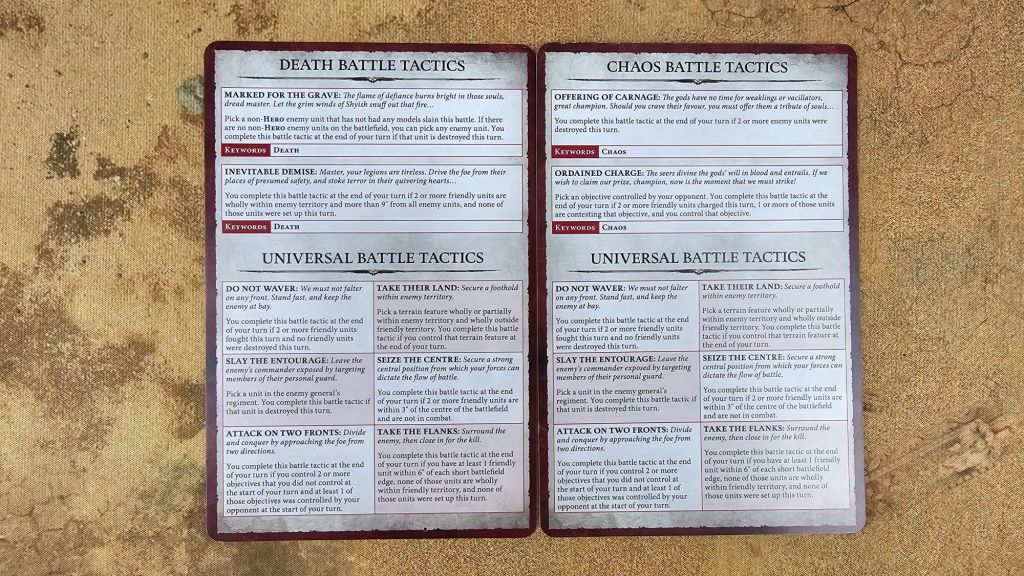
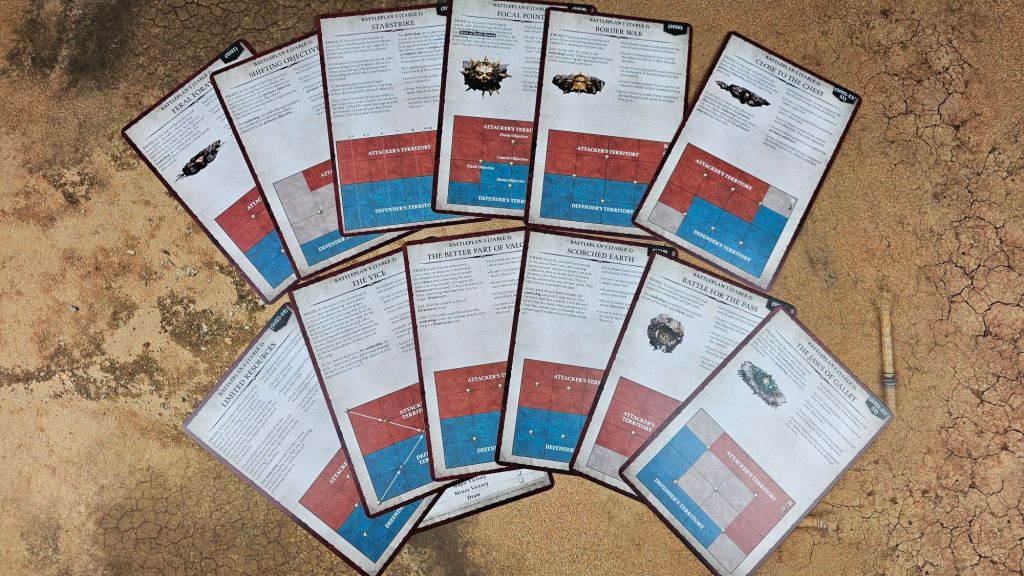
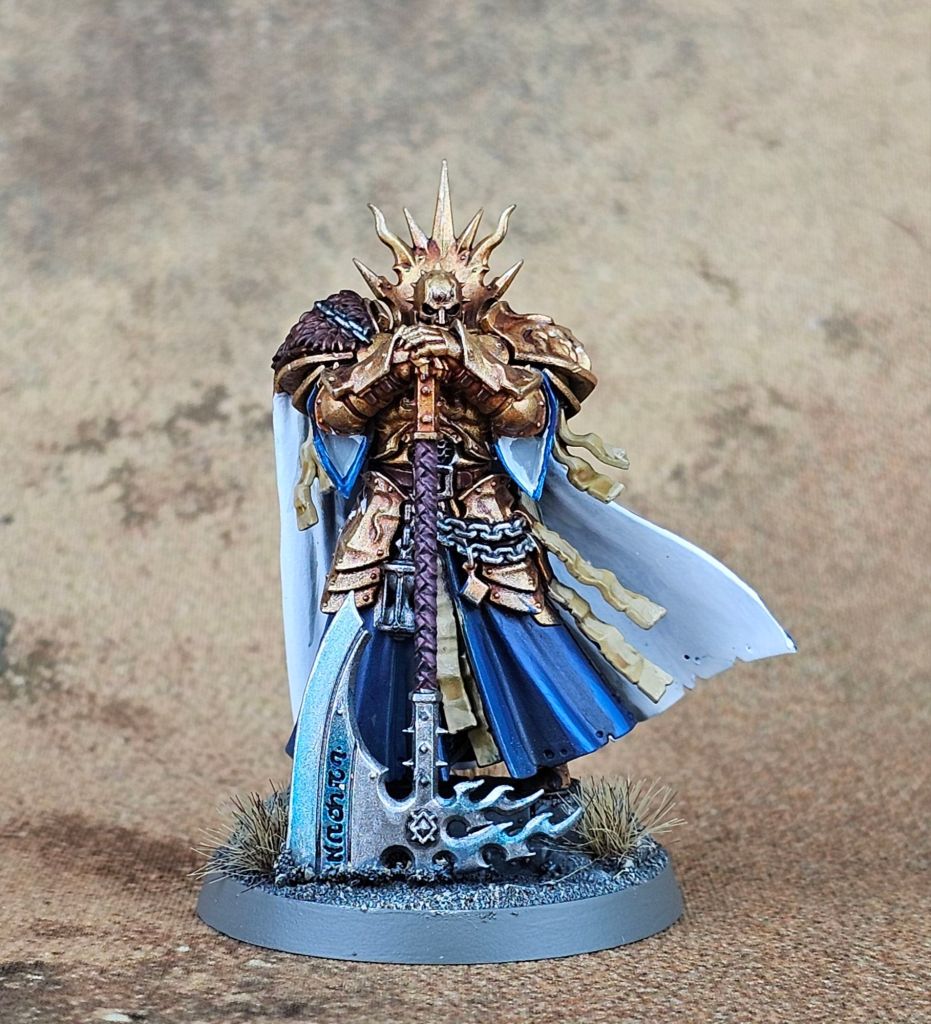
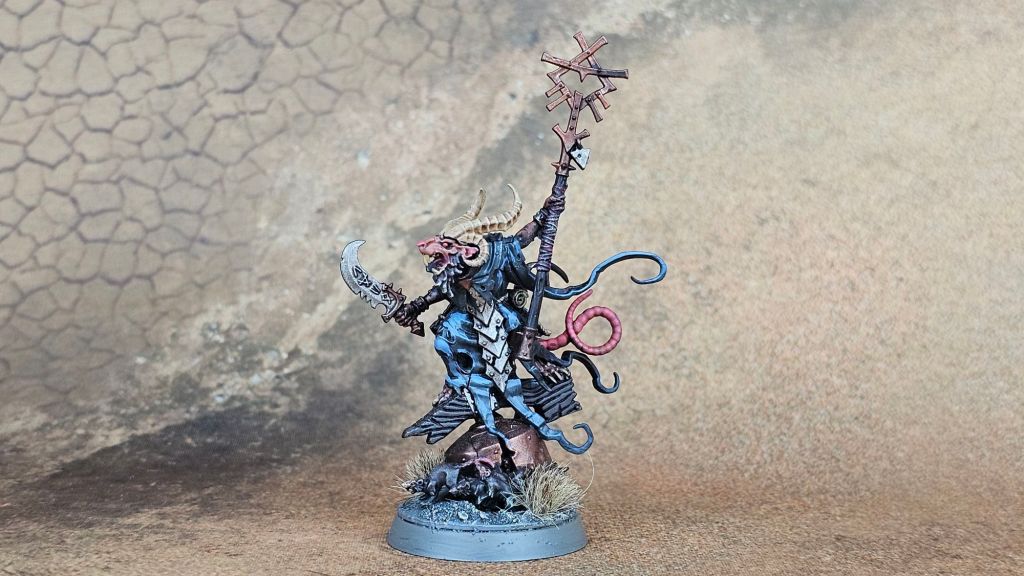







4 Comments »